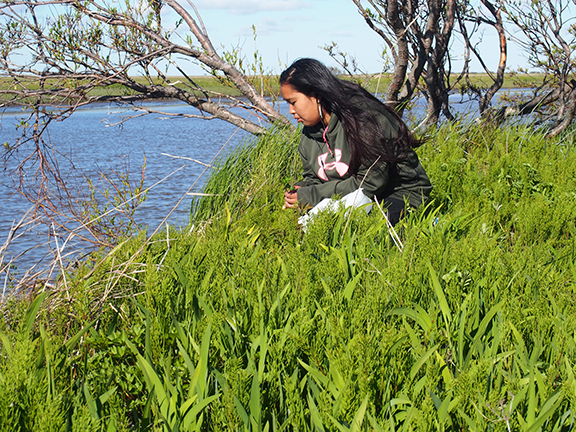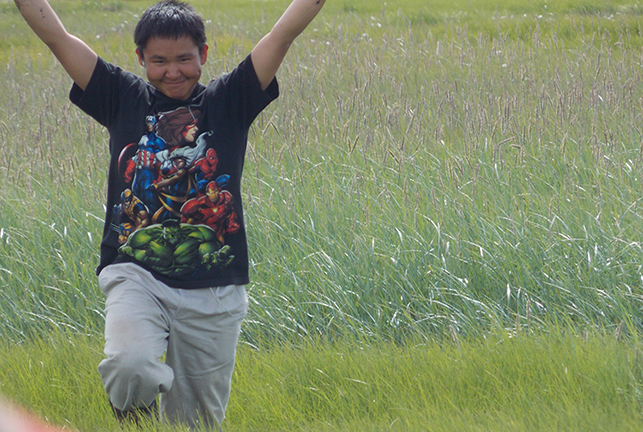Yup’ik Communities Turn to Indigenous Knowledge to Prevent Risk for Youth Suicide and Alcohol Abuse
 Culture plays a substantial role in reducing disparities among American Indian and Alaska Native (AI/AN) populations; experts acknowledge culture’s critical importance to intervention success and sustainability. Yet many questions remain about the mechanisms that produce this protective effect. For more than a decade, researchers at the Center for Alaska Native Health Research have been collaborating with Yup’ik communities to address challenges facing Alaskan youth.
Culture plays a substantial role in reducing disparities among American Indian and Alaska Native (AI/AN) populations; experts acknowledge culture’s critical importance to intervention success and sustainability. Yet many questions remain about the mechanisms that produce this protective effect. For more than a decade, researchers at the Center for Alaska Native Health Research have been collaborating with Yup’ik communities to address challenges facing Alaskan youth.
The Qungasvik (qoo ngaz vik) or “tools for life” prevention model is grounded in Yup’ik cultural and an indigenous knowledge framework. Through a self-determined, local community-developed and staffed intervention, the Qungasvik prevention model helps improve the lives and health of Yup’ik community members. In the past, the qasgiq (qaz giq), or communal house, was both a traditional communal living structure and a problem-solving process based on the collective will and decision of the people. The concept of qasgiq guides both the Qungasvik intervention implementation and the development of its community-based participatory research (CBPR) approach. Elders and community members match key cultural teachings with protective factors from suicide and alcohol abuse. These protective factors have been validated through collaborative research by communities and their university partners (Allen et al., 2014; Rasmus, Charles, & Mohatt, 2014). The qasgiq process contextually privileges the Yup’ik knowledge system while allowing science and research partners’ knowledge to contribute when appropriate and useful.
Today, the qasgiq is an organizing structure and a knowledge system that reflects and transmits core Yup’ik principles, ideologies, and theories. Research institution knowledge is more focused on the individual and more linear, moving from a definitive start to definitive end. In contrast, Yup’ik knowledge is more collective, relational, and cyclical. This approach to knowledge formation extends to intervention.

Billiy Charles is a fisherman from Emmonak with more than 30 years of experience in tribal leadership positions and a research co-investigator at the University of Alaska Fairbanks working to reduce health disparities among youth in his region. Qasgiq, as he explains, “has a meaning in qasgirarneq (qaz gee raar neq), to encircle. In coming together around our youth in the ways of our ancestors, we are strengthening our communities and our youth to become strong as we go through the process.”
In a Yup’ik cultural model of intervention, community healing, and repair lead to individual outcomes for youth. Simeon John is a lifelong community member from Toksook Bay and the lead prevention coordinator for the Qungasvik projects at the University of Alaska Fairbanks. He states, in words passed down from his father, with this model we are “opening a window to our ancestors so they may come in and provide their protective spirits, teachings, and knowledge to this and the next generation of youth.”
“We need the research to demonstrate that our culture, that our Yuuyaraq (you ya raq: Yup’ik way of life) is our prevention, it is intervention,” Billy Charles urges. This can be a difficult task for university researchers from scientific backgrounds, who need training, instruction, and direction from Yup’ik Elders and community experience as they work to measure or document the impacts of a culture-centered approach. These efforts have led to a deepening of the meaning of CBPR, and of its knowledge production, by taking the team to new levels of shared cultural understanding.
Stacy Rasmus, Ph.D., Principal Investigator, Center for Alaska Native Health Research, emphasizes a critical first step in CBPR for the researchers was to take the time to first figure out with communities where they, as researchers, fit into the qasgiq and Yup’ik relational system. This clarified how the tools of science and research can complement a community’s established toolkit. These tools of indigenous knowledge have proven effective at saving lives and protecting community members from stress and danger.
As Billy Charles observes, “every community has a qasgiq.” Qasgiq speaks to an important truth in all successful community-based health intervention efforts: Every community has a local cultural process of coming together, of organizing its work, and of intervening effectively. In Yup’ik communities, this spirit of community is always present, and not only in times of problems and crisis: “The qasgiq was always there, it was always there in times of joy, it was continuous, and it was every day.”
References
- Airhihenbuwa, C., Ford, C. & Iwelunmor, J. (2014). Why culture matters in health interventions: Lessons from HIV/AIDS stigma and NCDs. Health Education and Behavior, 41(1), 78-84.
- Allen, J., Mohatt, G. V., Fok, C. C. T., Henry, D., Burkett, R., & Team, P. A. (2014). A protective factors model for alcohol abuse and suicide prevention among Alaska Native youth. American Journal of Community Psychology, 54(1-2), 125-139.
- Barker, B., Goodman, A., & Debeck, K. (2017). Reclaiming Indigenous identities: Culture as strength against suicide among Indigenous youth in Canada. Canadian Journal of Public Health, 108(2), e208-e210.
- Gone, J. (2013). Redressing First Nations historical trauma: Theorizing mechanisms for indigenous culture as mental health treatment. Transcultural Psychiatry, 50(5), 683-706.
- Rasmus, S. M., Charles, B., & Mohatt, G. V. (2014). Creating Qungasvik (a Yup’ik intervention “toolbox”): Case examples from a community-developed and culturally-driven intervention. American Journal of Community Psychology, 54(1-2), 140-152.
Posted January 12, 2018

















